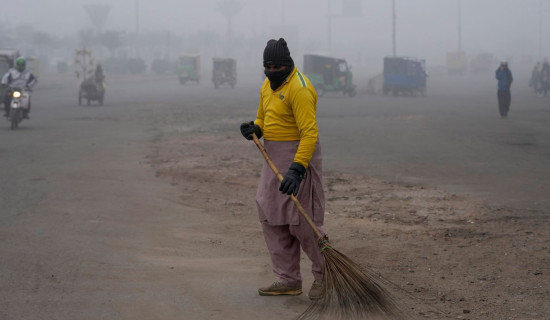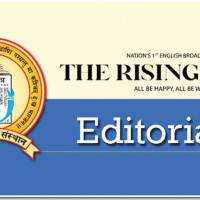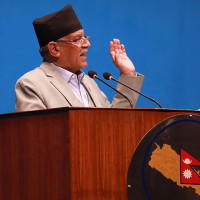- Wednesday, 12 March 2025
Promoting Health-seeking Behaviour
Health-seeking behaviour refers to the actions individuals take to maintain or restore health, including seeking medical care, adopting preventive measures, and following treatment recommendations. While modern medicine has made significant advances, many communities particularly in low- and middle-income countries (LMICs) continue to struggle with poor health-seeking behaviour. Delayed medical attention, reliance on traditional remedies, and avoidance of healthcare facilities contribute to preventable deaths and disease complications.
Improving health-seeking behaviour is critical for public health. It reduces disease burdens, improves early diagnosis and treatment outcomes, and enhances overall well-being. However, achieving this goal requires addressing socioeconomic, cultural, and structural barriers that prevent individuals from seeking timely and appropriate healthcare.
Health-seeking behaviour is influenced by a combination of individual, social, and systemic factors. Some individuals proactively seek medical care, while others delay or avoid treatment due to lack of awareness about diseases and available treatments, cultural and traditional beliefs that prioritise alternative medicine, economic constraints that limit healthcare access, fear of stigma and discrimination, especially for conditions like mental health disorders, and reproductive health issues and mistrust in healthcare systems often due to past negative experiences.
Importance
Addressing barriers to health seeking behaviour requires multi-faceted interventions at the individual, community, and policy levels. Delays in seeking healthcare can lead to disease complications, increased transmission of infectious diseases, and higher mortality rates. For example, tuberculosis (TB) spreads more when individuals delay diagnosis and treatment, cancer survival rates are significantly lower when detected at later stages, and maternal and child deaths occur due to delays in seeking antenatal and emergency care. Encouraging timely healthcare access can prevent premature deaths and reduce disease burdens on families and health systems.
Early diagnosis and prompt treatment improve recovery rates. Patients who seek timely care are more likely to complete treatment regimens, preventing complications like antimicrobial resistance (AMR) and chronic illnesses. For instance, early treatment of pneumonia in children significantly reduces fatalities, and adherence to tuberculosis treatment helps in bacterial suppression and preventing transmission.
Health-seeking behaviour is not just about curative care but also preventive measures like vaccinations, screenings, and healthy lifestyle choices. Preventive healthcare lowers the risk of non-communicable diseases (NCDs) like diabetes and hypertension, reduces vaccine-preventable diseases like measles and polio, encourages health check-ups leading to early detection of conditions like cervical cancer, and encouraging preventive healthcare saves lives and reduces long-term healthcare costs.
In many societies, traditional healers and alternative medicine play a dominant role in healthcare. While some traditional practices are harmless, others discourage timely medical intervention leading to delayed diagnoses and complications. In some communities, mental illnesses are seen as spiritual afflictions, leading individuals to seek faith-based healers instead of psychiatric care. Many women still prefer home births due to cultural norms that increases the risk of maternal and neonatal complications.
Healthcare is often expensive, especially in countries lacking universal health coverage (UHC). The cost of doctor visits, medications, and diagnostic tests prevents many from seeking medical help. Transportation to health facilities is a challenge in rural and remote areas and missed wages discourage daily-wage workers from seeking treatment and even when free healthcare services exist, indirect costs (e.g., transport and loss of income) still create barriers.
Mistrust in medical institutions, often due to previous negative experiences (e.g., misdiagnosis, poor treatment, discrimination), and low quality of services in overcrowded public hospitals. This mistrust discourages individuals from seeking medical care, particularly in marginalised communities. Many individuals do not recognise early disease symptoms. They are often unaware of preventive measures (e.g., vaccines, screenings) and rely on misinformation spread via social media. For instance, vaccine hesitancy driven by myths about side effects has slowed immunisation efforts for diseases like COVID-19 and polio.
Raising awareness through community-driven health campaigns can significantly improve health-seeking behavior. Strategies include using radio, TV, and social media to share health information. Conducting door-to-door education by trained female community health volunteers (FCHVs) and involving local influencers (religious leaders, teachers, and traditional healers) to build trust significantly improves health seeking behaviours.
Accessible and affordable primary healthcare encourages timely health-seeking behaviour. Key interventions include expanding rural clinics to reduce travel distances, providing subsidised or free healthcare for vulnerable populations and hiring and training community health volunteers to bridge gaps in medical access. Telemedicine and mobile health apps can reduce barriers to healthcare access by providing remote consultations, reducing the need for physical travel, and sending SMS reminders for vaccinations and check-ups.
Financial barriers
To overcome financial barriers, governments should expand universal health coverage (UHC) to ensure affordability and provide subsidised transportation for medical visits in rural areas. Public health campaigns should normalise mental health discussions to encourage psychiatric care, address stigma due to neglected tropical diseases (NTDs) by highlighting treatment success stories, counter vaccine misinformation with evidence-based communication.
Improving health-seeking behaviour is essential for public health. It reduces disease burdens, improves treatment outcomes, and enhances preventive care. However, achieving this requires addressing cultural, economic, and structural barriers through community-driven education and awareness campaigns, accessible and affordable primary healthcare services, digital health innovations and financial incentives, and by stigma reduction and trust-building measures. Governments, healthcare providers, and civil society must work together to create health-literate, empowered communities that seek timely and appropriate medical care. Investing in health-seeking behaviour improvements is not just a public health priority, it is a human rights imperative.
(Dr. Lohani is the executive director at the Health Concern. lohanis@gmail.com)
















